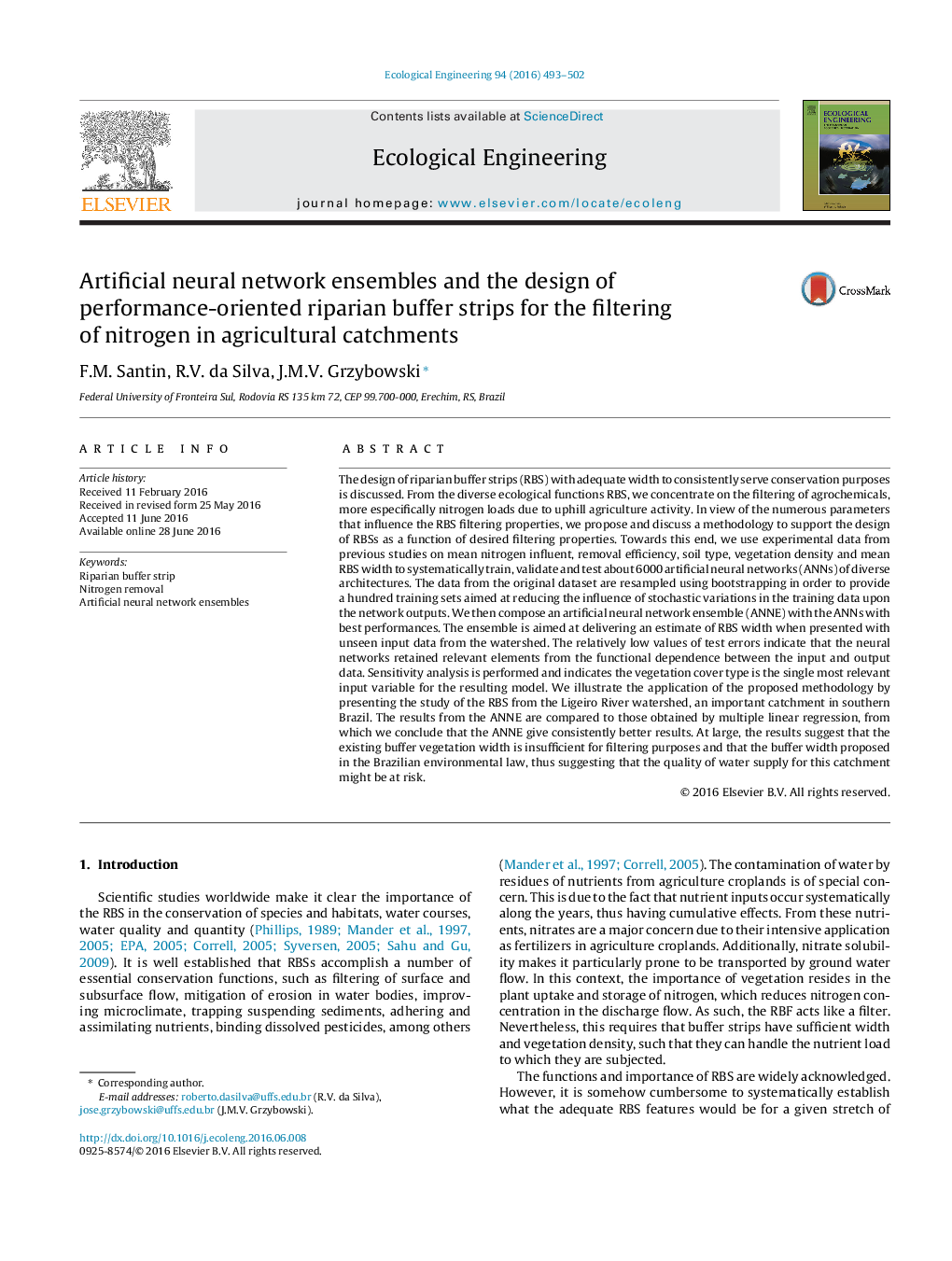| Article ID | Journal | Published Year | Pages | File Type |
|---|---|---|---|---|
| 4388576 | Ecological Engineering | 2016 | 10 Pages |
•ANNEs are shown to capture the essential features of the phenomenon.•The methodology is shown to be straightforward and accessible.•The methodology enhances the efficiency and response time of management processes.•The computer routines are implemented in a free platform and made available online.•New perspectives in the role of computers in supporting decision-making are given.
The design of riparian buffer strips (RBS) with adequate width to consistently serve conservation purposes is discussed. From the diverse ecological functions RBS, we concentrate on the filtering of agrochemicals, more especifically nitrogen loads due to uphill agriculture activity. In view of the numerous parameters that influence the RBS filtering properties, we propose and discuss a methodology to support the design of RBSs as a function of desired filtering properties. Towards this end, we use experimental data from previous studies on mean nitrogen influent, removal efficiency, soil type, vegetation density and mean RBS width to systematically train, validate and test about 6000 artificial neural networks (ANNs) of diverse architectures. The data from the original dataset are resampled using bootstrapping in order to provide a hundred training sets aimed at reducing the influence of stochastic variations in the training data upon the network outputs. We then compose an artificial neural network ensemble (ANNE) with the ANNs with best performances. The ensemble is aimed at delivering an estimate of RBS width when presented with unseen input data from the watershed. The relatively low values of test errors indicate that the neural networks retained relevant elements from the functional dependence between the input and output data. Sensitivity analysis is performed and indicates the vegetation cover type is the single most relevant input variable for the resulting model. We illustrate the application of the proposed methodology by presenting the study of the RBS from the Ligeiro River watershed, an important catchment in southern Brazil. The results from the ANNE are compared to those obtained by multiple linear regression, from which we conclude that the ANNE give consistently better results. At large, the results suggest that the existing buffer vegetation width is insufficient for filtering purposes and that the buffer width proposed in the Brazilian environmental law, thus suggesting that the quality of water supply for this catchment might be at risk.
